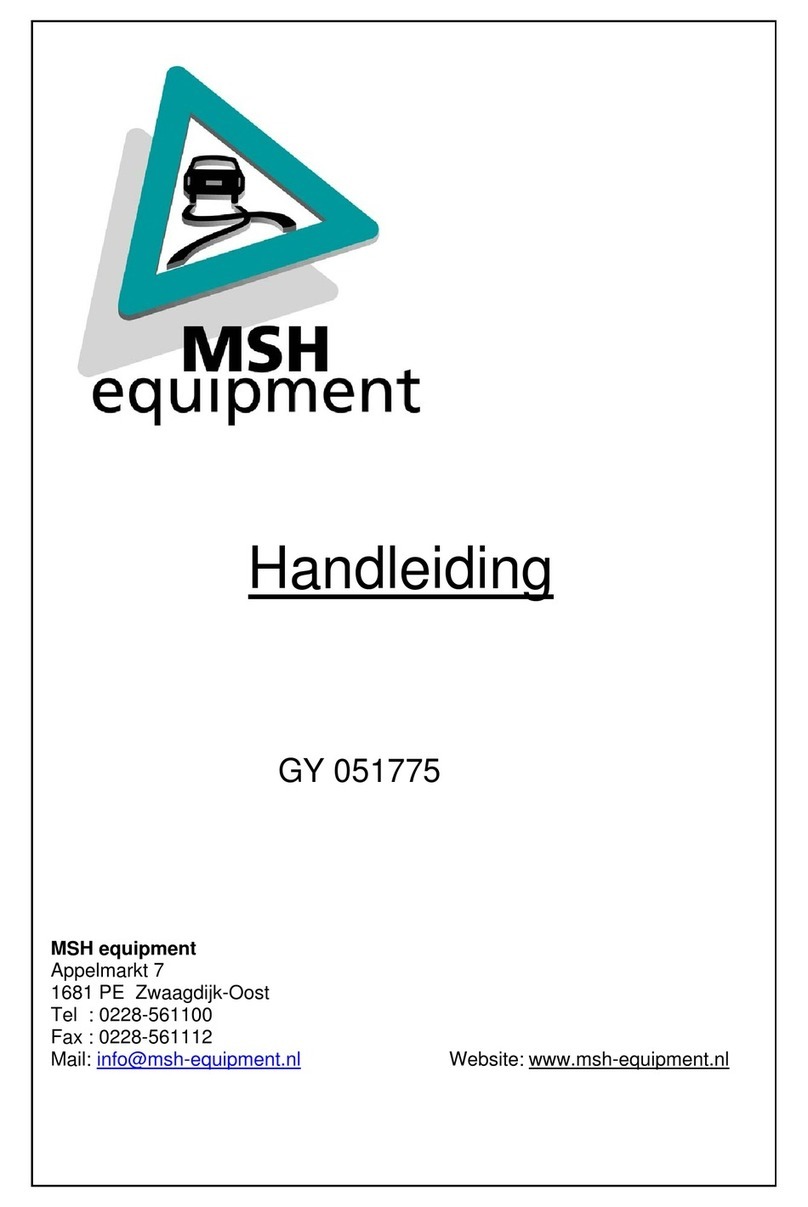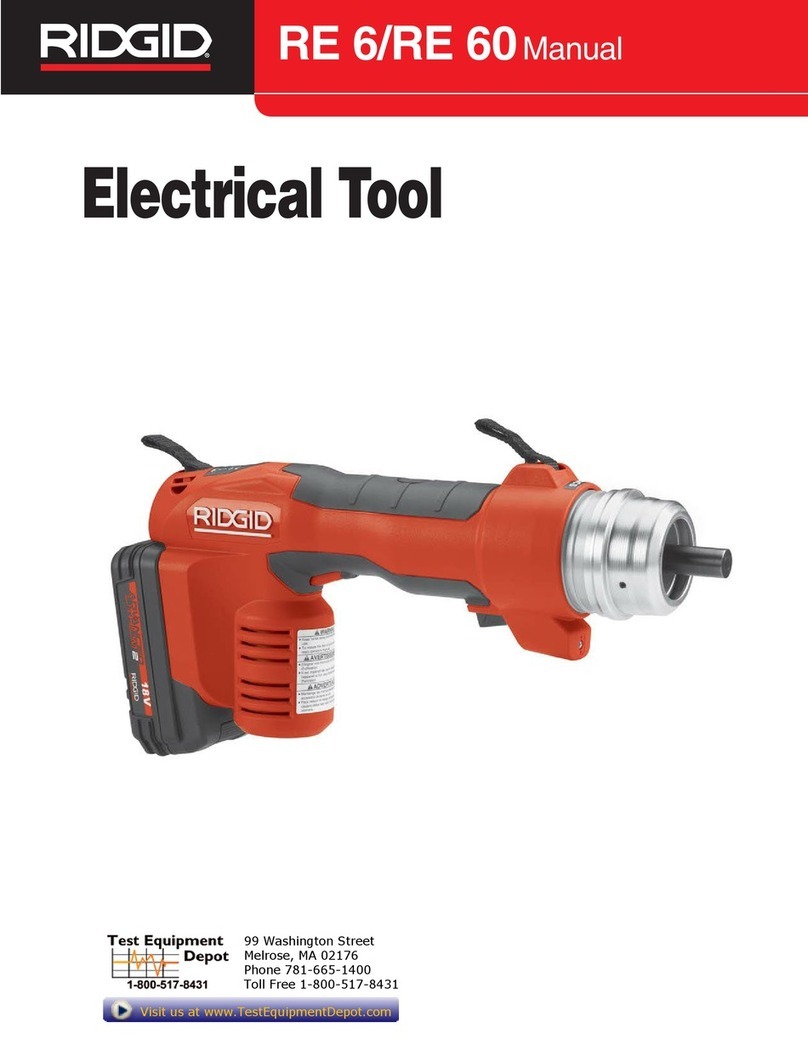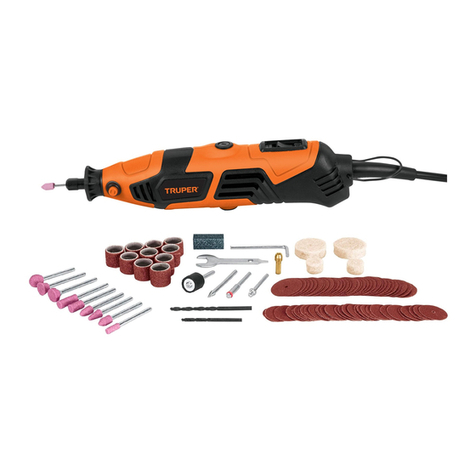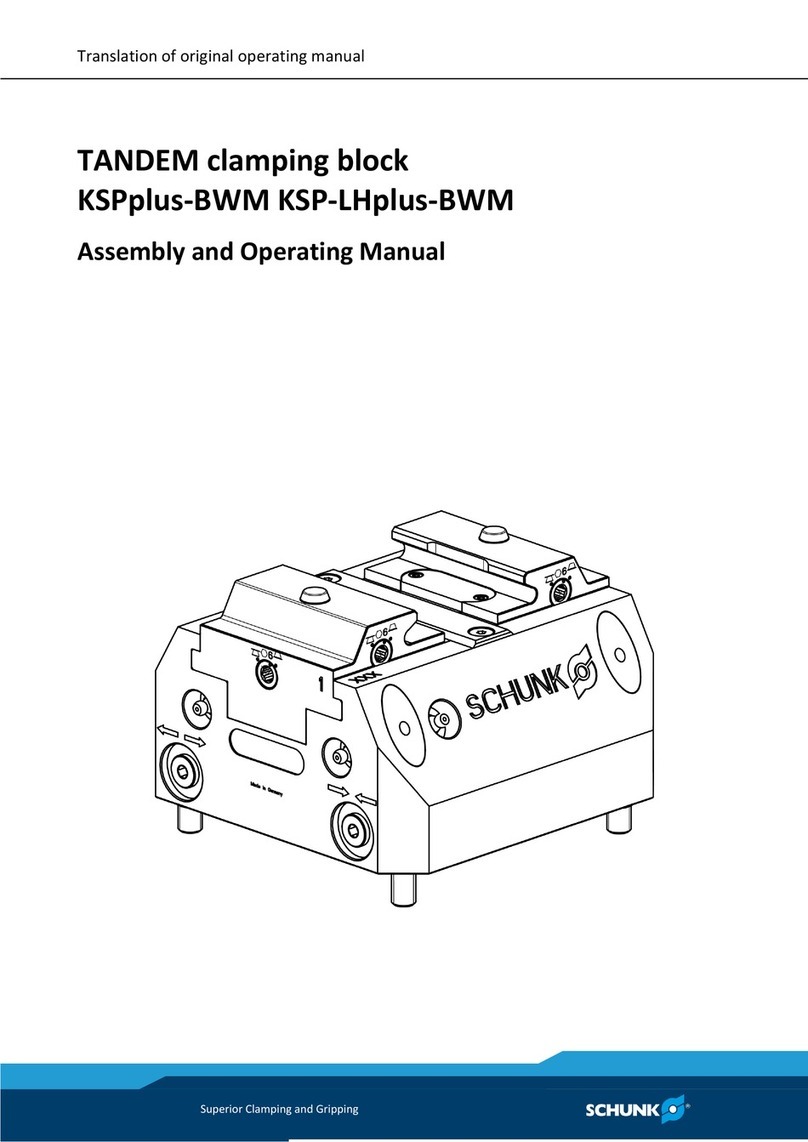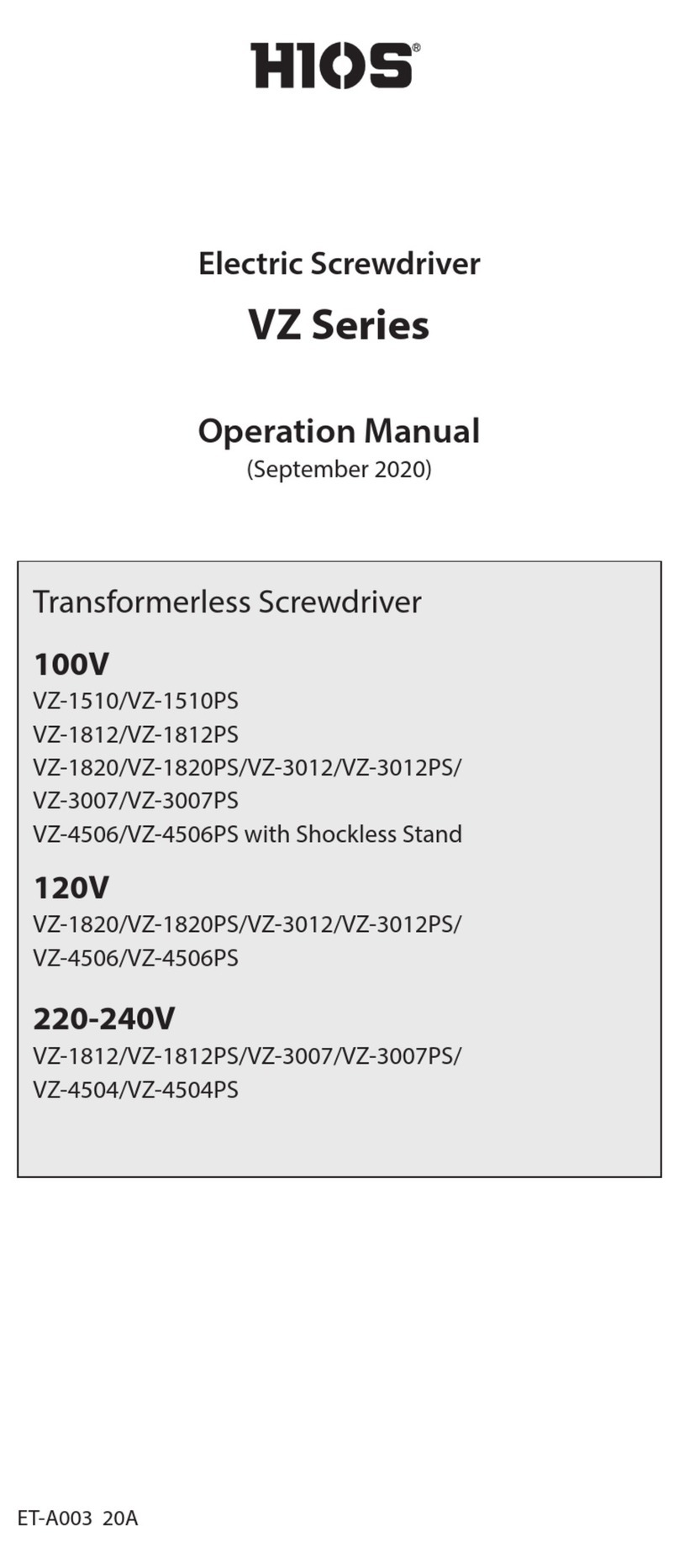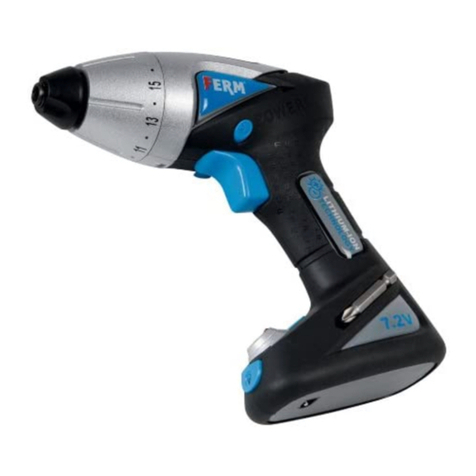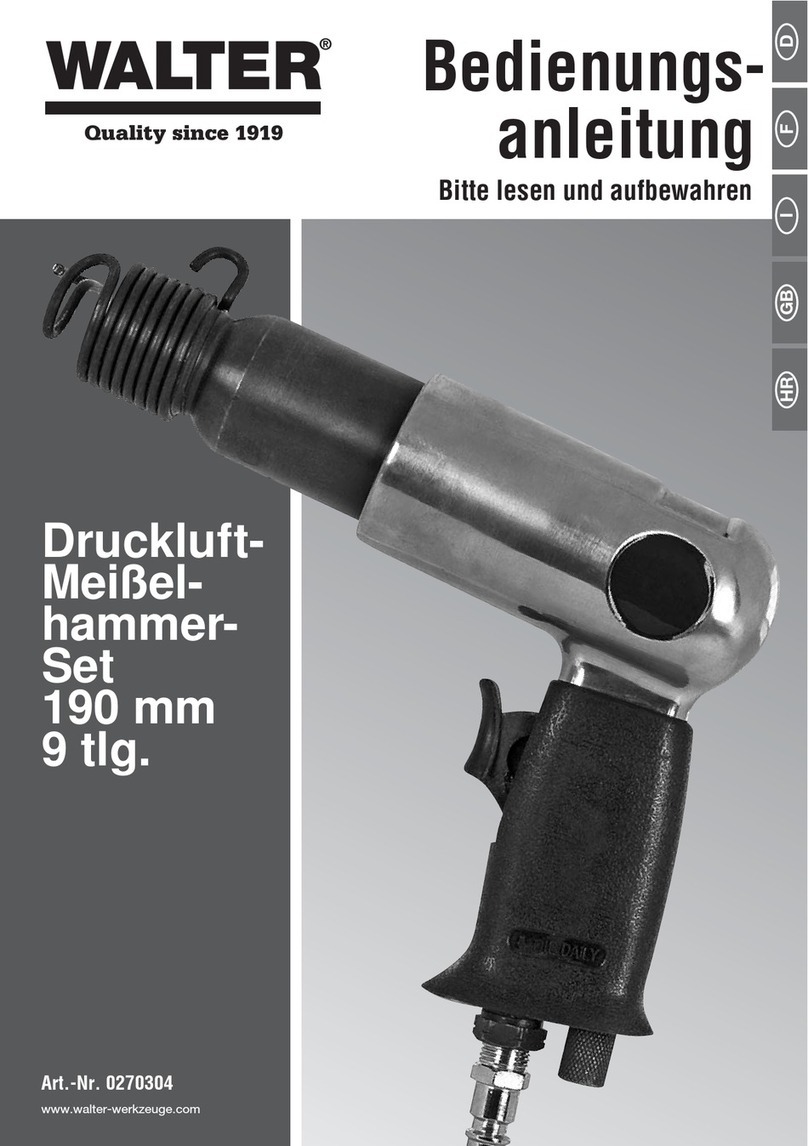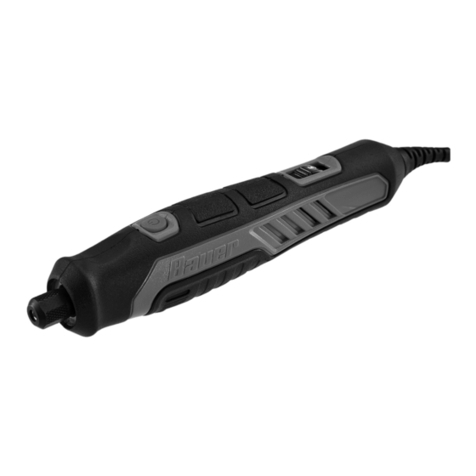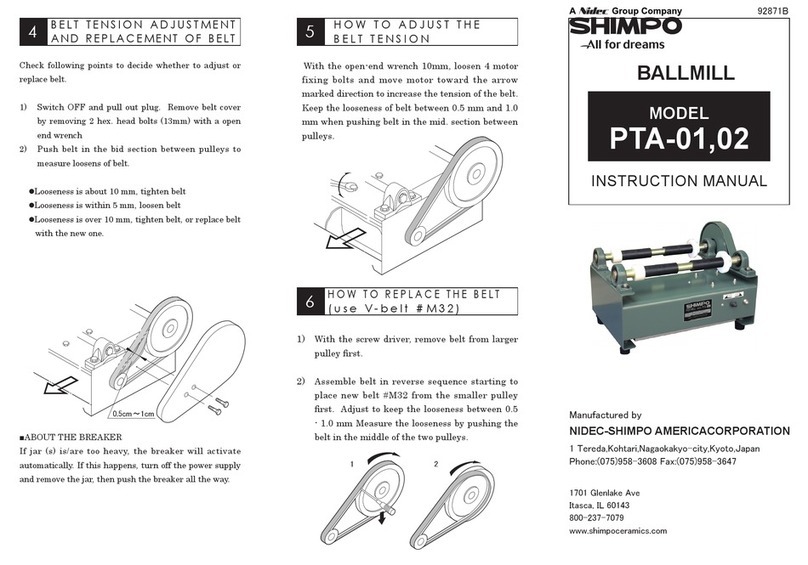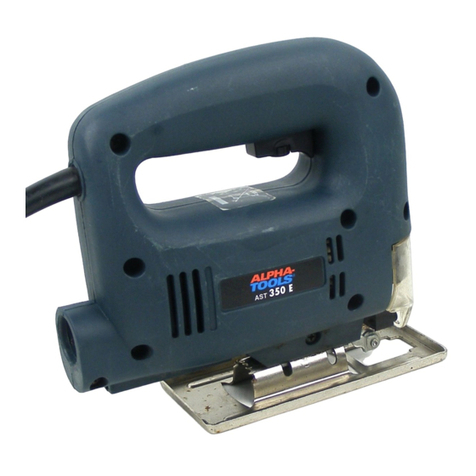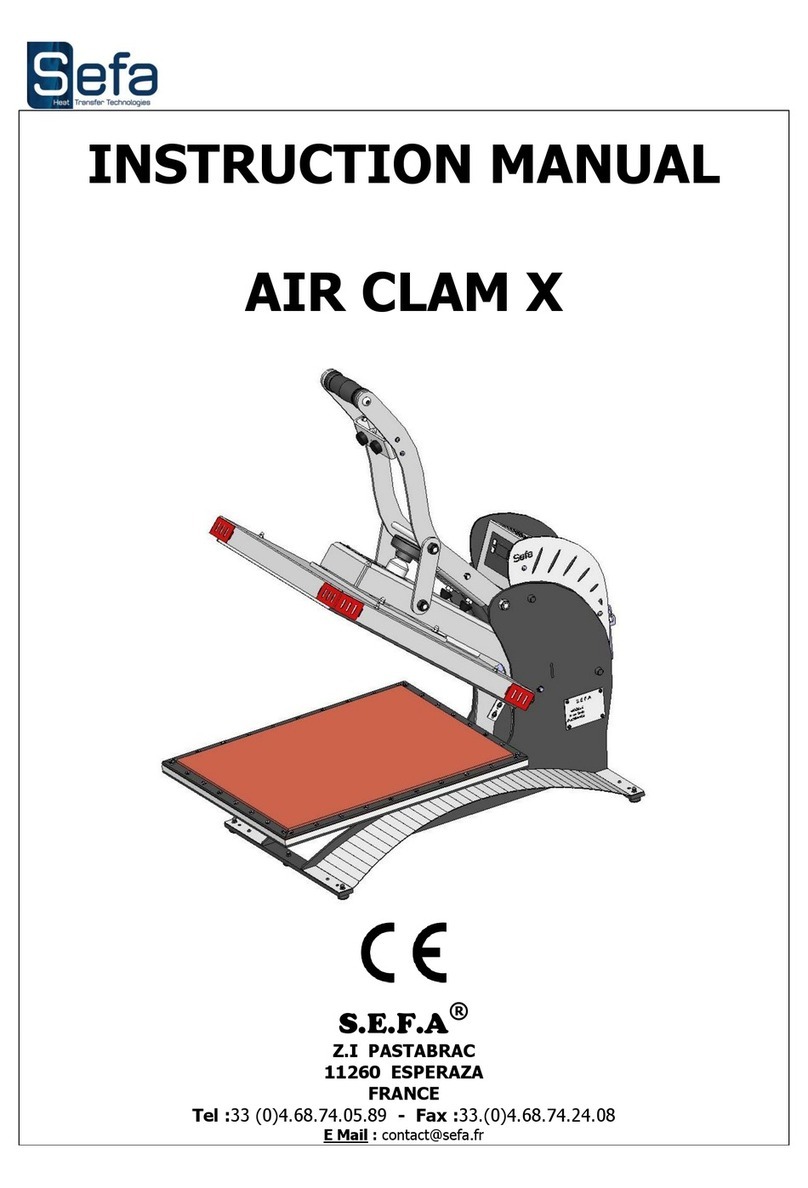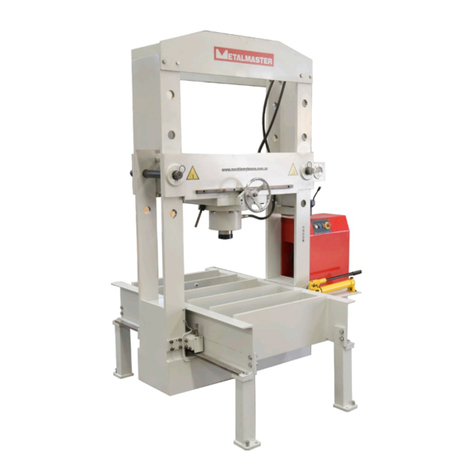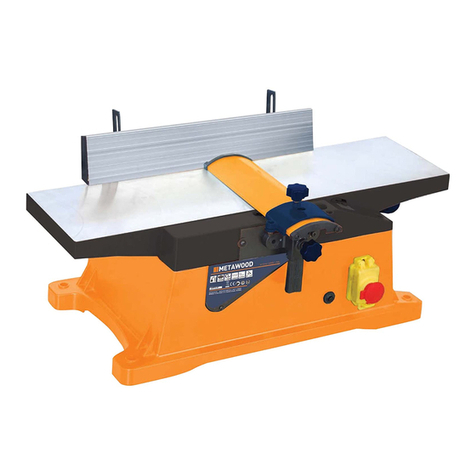Bend-Tech Dragon A400 Installation guide

Version 2.2 | English
A400
Part 2 of 4
Start-Up and Training Manual
Part 2: Machine Start-Up and Walkthrough
©2020 Bend-Tech LLC

ii Bend-Tech Dragon A400
Start-Up and Training Manual
©2020 Bend-Tech LLC
All rights reserved. The information in this manual is subject to change without notice. Bend-
Tech LLC strives to produce the most complete and accurate information regarding its
products. We are constantly working to improve and advance our products to improve product
performance, user satisfaction and experience. Bend-Tech LLC assumes no responsibility for
errors or omissions regarding this manual. Bend-Tech LLC assumes no liability for damages
resulting from the use of the information contained in this publication.

iiiBend-Tech Dragon A400 Start-Up and Training Manual
Dragon A400
Start-Up and Training Manual
Version 2.2
English
Original Instructions
January 2020
Bend-Tech LLC
729 Prospect Ave.
Osceola, WI 54020 USA
(651) 257-8715
www.bend-tech.com

iv Bend-Tech Dragon A400
Start-Up and Training Manual
Contents
Contents...................................iv
01
Setup Inspection...................... 7
1.1 General Overview ...............7
1.2 Rail ..........................8
1.2.1 Rail Assembly ..............8
1.2.2 Checking Rail Level..........8
1.2.3 Checking Rail Straightness ....8
1.2.4 Rail Splices ................8
1.3 Trolley. . . . . . . . . . . . . . . . . . . . . . . . . 9
1.3.1 Trolley Cover ...............9
1.3.2 Trolley Bearing Adjustment ... 10
1.3.3 Trolley Operation ........... 10
1.4 Drive Belt Alignment..............11
1.4.1 Drive Pulley Spacing .........11
1.4.3 Drive Belt Clamp ........... 12
1.5 Drive Belt Tension Procedure ..... 12
1.5.1 Checking Drive Belt Tension .. 13
1.5.4 Drive Belt Tension Nut ....... 14
1.5.5 Adjusting Belt Tension ....... 14
1.5.6 Locking Drive Belt Tension ... 14
1.6 Control Box ................... 15
1.6.1 C Axis Control Box.......... 16
1.6.2 Main Power Cord........... 16
Contents
1.6.3 Main Power Switch ......... 16
1.6.4 Main Power Fuses.......... 16
1.6.5 Breakout Board ............ 17
1.6.7 Motor Cables .............. 18
1.6.8 Motor Location and Operation
Index......................... 18
1.6.9 Axis Sensor Cables ......... 18
1.6.10 E-Stop Cables ............ 19
1.6.11 Ethernet Port ............. 19
1.6.12 Air Line Connection ........ 20
1.6.13 Laser Cord............... 20
1.6.14 Tool Connections .......... 20
1.7 Power and Control Connections ... 21
1.7.1 Cable Connections ......... 21
1.7.2 Motor Connections. . . . . . . . . . 21
1.7.3 Motor Connector Check...... 21
1.7.4 Sensor Connections ........ 22
1.7.5 Air Line Connections ........ 22
1.7.6 Ground Cable ............. 23
02
Machine Walk Through .......... 25
2.1 Machine Overview .............. 25
2.2 Gate ........................ 25
2.2.1 Gate Overview............. 26
2.2.2 Gate Eccentric Bearing ...... 26

vBend-Tech Dragon A400 Start-Up and Training Manual
Contents
2.2.3 Gate Lead Screws .......... 27
2.2.4 Gate Adjustment ........... 28
2.2.5 Gate Bearings ............. 28
2.2.6 Gate Rollers............... 28
2.2.7 Gate Clamp ............... 29
2.3 Material Support Lift............. 30
2.3.1 Material Support Lift
Overview...................... 30
2.3.2 Material Support Lift
Operation ..................... 30
2.3.3 Air Cylinder Adjustment ...... 31
2.4 Toolhead...................... 31
2.4.1 Toolhead Overview ......... 31
2.4.2 Toolhead Actuators ......... 32
2.4.3 Marker ................... 33
2.4.4 Engraver ................. 33
2.4.5 Engraver Air Regulators. . . . . . 33
2.4.6 Engraver Bleeder Valve ...... 34
2.4.7 Torch .................... 34
2.4.8 Laser .................... 34
2.5 Electrical Components ........... 34
2.5.1 Electrical Components
Overview...................... 34
2.5.2 Emergency Stops (E-Stops) .. 35
2.5.3 E-Stop Wiring. . . . . . . . . . . . . . 35
2.5.4 Homing Switches........... 35
2.5.5 Homing Sensor Designations
and Locations .................. 36
2.5.6 Homing Sensor Cable
Connections ................... 36
2.6 Motor Cable Connections. . . . . . . . . 37
2.6.1 Motor Cable Connection
Overview...................... 37
2.7 Hypertherm Unit................ 38
2.7.1 Hypertherm Overview ....... 38
2.7.2 Hypertherm Cable .......... 38
2.7.3 Amperage ................ 39
2.7.4 Air Supply. . . . . . . . . . . . . . . . . 39
2.7.5 Gas ..................... 39
2.7.6 Consumables.............. 40
2.7.7 Consumables Part List. . . . . . . 40
03
Machine Control Startup........ 41
3.1 Overview of Software Operation ... 41
3.1.1 Ethernet Connection ........ 41
3.2 Booting Up The Dragon A400 ..... 42
3.2.1 Power On Computer ........ 43
3.3 Power On Control Box ........... 43
3.3.1 Main Power Switch ......... 44
3.3.2 Green Power Button ........ 44
3.3.3 Launch Bend-Tech 7X ....... 44
3.3.4 Dragon A400 Software Color
Designations................... 44
3.3.5 Dragon CAM .............. 45
3.3.6 Machine Library ............ 45
3.3.7 Machine Control. . . . . . . . . . . . 47
3.3.8 Mach3 Machine Control ..... 47
3.3.9 Enable Machine............ 48
3.4 Jog Controls System Check....... 48

vi Bend-Tech Dragon A400
Start-Up and Training Manual
Contents
3.4.1 Open Jog Controls.......... 48
3.4.2 Motor Location and Operation
Index......................... 49
3.4.3 Jogging the Machine ........ 49
3.5 Homing The Machine............ 50
3.5.1 Homing An AXIS ........... 50
3.5.2 Axis Denition Table......... 50
3.5.3 Jog The Trolley ............ 51
3.5.4 Pre-Operational Drive Belt
Check ........................ 51
3.5.5 Home All Axis.............. 52
3.6 Hypertherm ................... 52
3.6.1 Hypertherm Power Switch .... 53
3.6.2 Hypertherm Cut Type........ 53
3.6.3 Hypertherm Air Supply....... 54
3.6.4 Hypertherm PSI Settings ..... 54
3.6.5 Hypertherm Cut Settings ..... 54

01
Setup Inspection
1.1 General Overview
After assembling the Dragon A400 it is important to conduct an initial inspection of components
to ensure proper setup. An improperly assembled machine can create numerous problems
once it comes time to power up the machine and begin operation.
This chapter is set up as a procedural. Following this procedure will ensure the Dragon A400 is
set up properly before it is powered up for operation.
It is often the case that a aw in the operation of the machine is the result of improper
setup. Initial inspection is critical to eliminating setup variables in the troubleshooting
process.
! Caution !
It is important to inspect the machine before it is powered up. Handling electrical
ttings can cause injury to the Operator. Always inspect electrical connections while
the machine is powered down, preferably disconnected from power sources.
7Bend-Tech Dragon A400 Start-Up and Training
Setup Inspection
01

1.2 Rail
The Rail allows the Dragon A400 to precisely position material during the cutting process. The
Rail is mounted on the Rail Beam, which forms the “backbone” of the machine. Ensuring the
Rail is assembled correctly and is straight and level is critical to the overall operation of the
machine.
1.2.1 Rail Assembly
The Rail is assembled in sections. The number of sections will depend on the length of the
machine. There can be up to four Rail sections on the Dragon A400. It is critical that these
sections are straight and level to insure proper operation of the Trolley, and proper feed of
material to the Toolhead. If the Rail is not straight and level it can aect the operation of the
Drive Belt and/or damage the Drive Belt and Drive Belt system.
1.2.2 Checking Rail Level
Each Rail section should be checked for side-to-side level, and level along its length, using
a bubble level. If the Rail needs to be adjusted the Technician can use the Swivel Levelers
provided with the Dragon A400. The Swivel Levelers should be installed upon assembly. If
the machine is bolted to the oor, the bolts securing the Floor Brackets should be loosened
enough so the legs can be adjusted appropriately to level the Rail, then re-tightened.
1.2.3 Checking Rail Straightness
The Rail should be checked for straightness along its length. The most accurate way to check
for Rail straightness is by using a laser tool. However, a taut string will also work to check
straightness. If the Rail is not straight the Technician will need to straighten the Rail by aligning
each individual Rail section beginning at the front of the machine, using the front Rail section
as the benchmark.
1.2.4 Rail Splices
Ensure that each Rail Splice intersects with the next as seamlessly as possible. Ensure that all
of the Rail Splices are fastened properly to the Rail.
When equipped with the Cooling System it is recommended that the back of the Rail
be set slightly higher than the front
8Bend-Tech Dragon A400
Start-Up and Training
Setup Inspection
01

1.3 Trolley
The Dragon A400 uses the Trolley to position the material during the machine’s cutting
process. Ensuring the Trolley is assembled correctly, and is mounted on the Rail correctly, is
critical to the operation of the machine.
1.3.1 Trolley Cover
In order to inspect for proper Trolley motor and sensor cable connections, the Trolley Cover
must be removed. This requires removing the 16 screws that secure the cover to the Trolley.
This also requires disassembling the E-stop switch located on the Trolley Cover.
Aligning the Rail Splices is one of the most dicult and time-consuming parts of the
assembly process. Ensuring Rail Splices are straight and even is critical to the setup
of the Dragon A400. Bend-Tech recommends experienced personnel perform the Rail
Splice installation.
The Dragon A400 is shipped with the Trolley Cover separate from the Trolley. Bend-
Tech recommends leaving the Trolley Cover o the machine in order to conduct initial
machine inspection. However, in some cases, the inspection will require Trolley Cover
removal.
9Bend-Tech Dragon A400 Start-Up and Training
Setup Inspection
01

1.3.2 Trolley Bearing Adjustment
The Trolley is adjusted using the
two eccentric bearings located
underneath the mounting plate
on the left side. The bearings on
the right side of the Trolley are
stationary (not adjustable). If the
Technician attempts to rock the
Trolley from side-to-side on the
Rail there should be no play in
it. The Trolley should be snug to
the Rail. If there is any play in
the Trolley it will be necessary to
adjust the eccentric bearings located on the bottom of the Trolley. The Operator should use a
¾ in. wrench to adjust the Trolley eccentric bearings.
1.3.3 Trolley Operation
If there is no play in the
Trolley on the Rail, slide the
Trolley along the length of
the Rail to ensure smooth
operation. If it seems tight, it
may be necessary to adjust the
eccentric bearings to provide
smoother operation. If the
Trolley binds anywhere on the
Rail ensure the Rail is level and
straight as outlined in section
1.2. If it is determined that the
Rail is level and straight but
the Trolley is still binding, it will
be necessary to inspect and
measure the Rail to ensure it is
not out of alignment.
Chuck
Front of Trolley
Left Side Adjustable
Eccentric Bearings
Right Bearing
(Concentric)
Chuck
Front of Trolley
Left Bearing
(Eccentric)
10 Bend-Tech Dragon A400
Start-Up and Training
Setup Inspection
01

1.4 Drive Belt Alignment
If the Drive Belt Pulley is not aligned properly it will cause the Drive Belt to ride improperly on
the idler pulleys and potentially lead to Drive Belt derailing, ipping on the pulleys, pushing the
Drive Belt Pulley washer o the Drive Belt Pulley, Drive Belt damage, or Drive Belt failure.
1.4.1 Drive Pulley Spacing
To check Drive Pulley spacing, use a Vernier caliper to measure the distance from the inside
of the Drive Pulley to the X Axis motor mount surface. The distance should measure ⅜ in. or
.375 in. A slight dierence in measurement is acceptable but it should be close to the specied
measurement.
Ensuring the Drive Belt is mounted on the machine correctly and tensioned correctly is
important to the operation of the Trolley.
X Axis Motor
Mount Surface
Belt Pulley
Belt
11Bend-Tech Dragon A400 Start-Up and Training
Setup Inspection
01

1.4.3 Drive Belt Clamp
Before tensioning the Drive Belt, ensure
it is secured in the rear Clamp Block
properly. The Drive Belt should be straight
within the Drive Belt Clamp. The Drive
Belt should be positioned in the Clamp
Block so it is butting up against the Clamp
Block fasteners, as far away from the Rail
as possible. The Clamp Block should be
securely tightened by hand.
1.5 Drive Belt Tension Procedure
The Operator should ensure the Drive Belt is tensioned properly. If Drive Belt tension is not
set to specication it can result in inconsistent machine operation. It is important to tension the
Drive Belt to ensure consistent operation of the Dragon A400. Before setting Drive Belt tension
ensure all steps in section 1.4 have been performed.
The Drive Belt Tension procedure is also outlined in the Dragon A400 Assembly
Manual, Chapter 4, section 4.3.
When checking or adjusting the Drive Belt ensure the Trolley is positioned at the
mid-way point on the Rail.
Belt Clamp Belt
Belt Clamp
Bolts
Rail
12 Bend-Tech Dragon A400
Start-Up and Training
Setup Inspection
01

1.5.1 Checking Drive Belt Tension
Lay a tape measure on the cable track with 0 on the ruler positioned where the Drive Belt
enters the Drive Belt Clamp Block. Using the Belt Tension Tool from the Miscellaneous box,
position the tool one foot from the Drive Belt Clamp Block. Place a nger under the Drive Belt
two feet from the end of the Drive Belt Clamp Block. Push straight down on the Belt Tension
Tool with the right index nger while supporting the Drive Belt with the left hand. When the Belt
Tension Tool clicks, observe where the top face of the lever crosses the plane on the body of
the tool. This position indicates belt tension.
Improper Drive Belt tension will lead to inconsistent Trolley operation.
1 ft. 2 ft.
Belt Tension 120 lbs
Belt Tension Tool
13Bend-Tech Dragon A400 Start-Up and Training
Setup Inspection
01

1.5.4 Drive Belt Tension Nut
The Clamp Block is
tted with a threaded
adjustment extension
that ts through the plate
on the Tail of the Dragon
A400. There are two
nuts on the threaded
adjustment extension,
one is used to adjust the
Drive Belt tension and
the other is tightened
against the adjustment
nut to lock tension in
place.
1.5.5 Adjusting Belt Tension
Using a ¾ in. wrench or socket, loosen the outer locking nut. Once loose, the Operator should
be able to remove the locking nut by hand. To add tension to the Drive Belt, use a ¾ in.
wrench or socket to turn the adjustment nut clockwise. To decrease Drive Belt tension turn the
adjustment nut counterclockwise.
1.5.6 Locking Drive Belt Tension
To lock in Drive Belt tension, thread the second ¾ in. nut onto the Drive Belt Tension adjuster.
Holding the adjustment nut with a ¾ in. wrench, tighten the locking nut with a ¾ in. socket and
ratchet or ¾ in. wrench against the adjustment nut slightly by turning it clockwise.
! Warning !
To avoid over-tensioning and possibly damaging the Drive Belt, check Drive Belt
tension several times during the tensioning process.
E-Stop
Rear Belt Clamp
Tension Nut
Limit Switch
Locking Nut
14 Bend-Tech Dragon A400
Start-Up and Training
Setup Inspection
01

1.6 Control Box
The Control Box is mounted to the Dragon A400 at the Bend-Tech Manufacturing Facility.
Ensure the Control Box is securely mounted in its location on the rear side of the third support
leg from the front of the machine. Ensuring the Control Box is properly and securely mounted
is critical to long-term functioning of its internal components and the Dragon A400. Ensure all
cables are properly inserted and secured in their respective connectors.
To open the Control Box, use a large, at blade screwdriver to turn the Control Box
latch.
Y
A B
Z
XY C X-
B A+A-
EStop
Engraver Torch
Laser
Gate EStop EStop
Z+Z-
L
E
Motor Cable
Connections
Axis Sensor Cable
Connections
C-Axis Cable
Connection
Ethernet Cable
Connection
Engraver Air Line
Connection
Main Power Switch
Main Power Cord
Connection
Main Power Fuses
Air Line
Connection
Lifter Air Line
Connection
Control Box
Latch
E-Stop Cable
Connections
Green Power
Switch
15Bend-Tech Dragon A400 Start-Up and Training
Setup Inspection
01

1.6.1 C Axis Control Box
On Dragon A400 machines with a Powered
Gate, the Control Box will be equipped with
a C Axis Control Box piggybacked onto the
Control Box. Ensure the C Axis Control Box
is securely mounted on the Control Box and
that the cables are tightened securely in their
connections.
1.6.2 Main Power Cord
The Main Power Cord connects to the Control
Box in the black hexagonal port just under the
Engraver (E) Air Line Connection. Ensure the
Main Power Cord is seated in its connection.
1.6.3 Main Power Switch
The Main Power Switch is located just above the Main Power Cord. The Main Power Switch
should be o (the O side depressed) while inspecting and servicing the machine.
1.6.4 Main Power Fuses
The Main Power Fuse is located in a slot just below the Main Power Cord. To access the Main
Power Fuse, remove the Main Power Cord from its socket and use a nger to slide out the
Main Power Fuse holder. For Main Power Fuse location see Control Box diagram, section 1.6.
Not all machines will use the C and Gate connections.
Main Control Box
C Axis
Control Box
16 Bend-Tech Dragon A400
Start-Up and Training
Setup Inspection
01

1.6.5 Breakout Board
The Breakout Board should be properly seated in the motor drivers. Open the front cover of the
Control Box. Locate the red circuit board in the top left of the Control Box. This is the Breakout
Board. Press on the Breakout Board rmly to ensure it is seated into each motor driver. No
other inspection is necessary within the Control Box.
The Main Power Fuse is a 10A, 120VAC fuse. Ensure any replacement fuses are 10A,
120VAC.
The Main Power Fuse holder has two fuse locations. The inner fuse is the Main Power
Fuse, the outer is a replacement Main Power Fuse.
! Caution !
Ensure power is disconnected from the machine before opening the Control Box.
Press Here when checking the
Breakout Board
17Bend-Tech Dragon A400 Start-Up and Training
Setup Inspection
01

1.6.7 Motor Cables
Motor Cable connections are grouped in the top left corner of the Control Box cover. There are
ve Motor Cables connected to the Control Box. Powered Gate machines have a Powered
Gate Control Box with a separate C Drive motor cable. Ensure all Motor Cables are securely
inserted at their Control Box connections and that their retaining clips are in place. If it is
necessary to remove a Motor Cable it is critical to the operation of the machine that they be
re-connected in their respective socket. Failure to do this will result in improper function of the
machine and could possibly damage the machine.
1.6.8 Motor Location and Operation Index
1.6.9 Axis Sensor Cables
Motor Sensor cable connections are grouped in the top right of the Control Box cover. Ensure
all Motor Sensor cables are securely seated at their Control Box connections and that they
are tight. If it is necessary to remove a Motor Sensor cable it is critical to the operation of the
machine that they be re-connected in their respective socket. Failure to do this will result in
improper function of the machine and could possibly damage the machine.
Axis Location Operation
X Trolley Moves Trolley forward/backward
Y Chuck Rotates chuck clockwise/counter clockwise
Z Tool Head Moves Tool Head left/right
A Tool Head Moves Tool Head up/down
B Material Support Raises/lowers material support
C Front Gate Rotates Front Gate clockwise/counter-clockwise
! Warning !
Ensure the Main Power Switch is o (O) before handling Axis Sensor Cables.
18 Bend-Tech Dragon A400
Start-Up and Training
Setup Inspection
01

1.6.10 E-Stop Cables
There are three E-Stop cables located in the upper right corner of the Control Box. The E-Stop
cables are at the bottom of the group of cables located in that position. Assure the E-Stop
Cables are securely seated and tightened in their Control Box connections.
1.6.11 Ethernet Port
The Ethernet Port is located near the center of the Control Box. Ensure the Ethernet cable
that connects the Dragon A400 computer to the Control Box is connected and seated in the
Ethernet Port cable receptacle, and that it is securely clipped in place.
Ensure the Ethernet cable is connected directly to the computer. Do not use adapters.
A link light at the Ethernet port indicates proper connection.
It is important to route the Ethernet cable away from the Torch cable as well as other
electrical feed to ensure proper signal, and avoid electrical interference
While there are four E-Stop buttons, only three E-Stop cables connect at the Control
Box. It does not matter in what order the E-Stop cables are connected at the Control
Box.
19Bend-Tech Dragon A400 Start-Up and Training
Setup Inspection
01

1.6.12 Air Line Connection
The air line connection for the machine is located in the bottom central portion of the Control
Box cover. It consists of:
• Air compressor connection
• Engraver and Material Support Lift Connections
• Air Solenoid
• Engraver mechanism
The air line that will feed the Dragon A400 Engraver and Material Support Lift should be
connected to the ttings located near the center of the Control Box. Ensure all air lines and air
line ttings are tight and leak-free.
1.6.13 Laser Cord
The Laser Cord plugs into the Control Box just below the air line assembly tting. The Laser
Cord has a red plastic identication tting on the wire connection to identify it. Assure the Laser
Cord is seated in its connection.
1.6.14 Tool Connections
The tool connections for the Dragon A400 are located at the bottom right of the Control Box.
The Engraver uses the left hand connection, the Torch uses the center connection. The Torch
cable should run to the Torch power supply.
20 Bend-Tech Dragon A400
Start-Up and Training
Setup Inspection
01
Other manuals for Dragon A400
14
Table of contents

